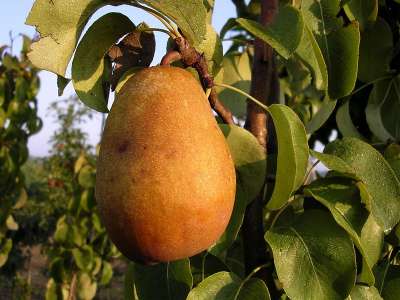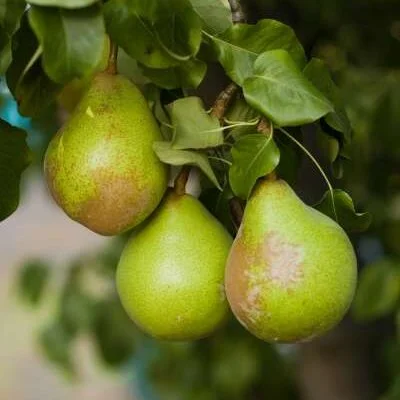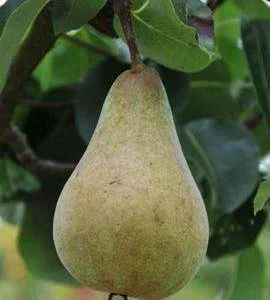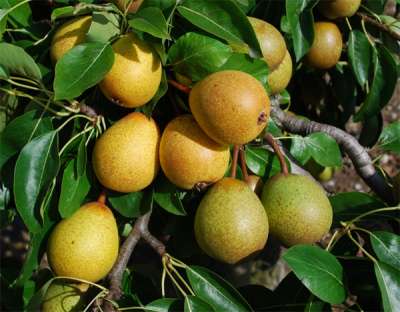Your basket is currently empty!
A guide to pear tree problems, pest and diseases
Scab
Scab is the most prevalent disease you may encounter when growing your own Pear trees, for Pears as well as Apples and is quite widespread although Pear scab is a slightly different species than the scab that affects apples, but treatment is the same. It is identified by blackish scabs which develop on the fruits, and as blisters on the leaves. Some varieties are more prone than others. It can be controlled by a good broad spectrum fungicide recommended for scab by your local stockist [alas most of the best ones at the time of writing have been withdrawn] Prevention is better than cure so if you suffer from it one year be prepared early the next; start a spray programme just after bud-break and repeat as directed by the manufacturer. It can be necessary to apply the last application in late July. Fallen leaves affected by scab should be raked up and burnt. Scab is usually more prevalent in wet areas or rainy summers but most fruit tree growers experience at some degree every year. Older varieties do tend to be more susceptible.
Canker
Canker causes dieback on the main stems and branches. Best to cut out affected branches where possible. Further information see treatment described for apples.
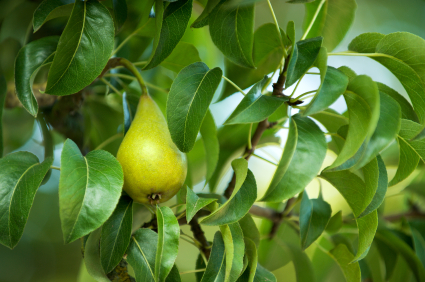
Pear leaf blister mite
Pear leaf blister mite seems to be becoming a more prevalent problem. The microscopic mites live inside the leaves and cause blisters to appear on the leaf surface. At first they are pale orange. This is a difficult pest to eradicate; use a systemic insecticide – timing is critical. Application must be just as the leaves are beginning to emerge. This is when the adults are active outside of the leaves and is the time to eradicate them. Fallen leaves should be removed and destroyed.
Aphids AKA Greenfly!
Aphids (AKA Greenfly) can infest soft new growths and if left unchecked sap the strength of the tree and also encourage diseases. Usually the first signs are curling and distorted new leaves and it is then udually possible to see the tiny insects thickly clustered around the stems. They are fairly easy to control – numerous insecticides and so called ‘bug guns’ are on the markets and the latter are particularly easy to apply and generally quite effective. A spray with water and diluted detergent can also work if you prefer not to use chemicals, and biological controls can also be introduced.
Virus
Virus can sometimes affect Pears. It can be identified by stunted, poor, yellow or streaky growth. But to reliably establish virus a lab test is really required because many others symptoms may appear similar. If a tree does have a virus then it must be destroyed as there is no cure and it may spread to other trees. Some deficiencies and aphid attack can produce similar results.
Pear midge
Pear midge causes young fruits to blacken and fall from the tree whilst still immature. The larvae of the midge emerge from the fallen fruits and burrow into the soil to pupate and perpetuate next years batch. It is important therefore to remove all fallen fruits to prevent this from happening. Raking and cultivating the soil under the trees also restricts the colony as it disturbs the insects whilst they are in the ground where they spend much of their time.
View our nice and healthy Pear trees
Container Growing Pear trees
Is dealt with fully in our article Growing fruit trees in pots.
Make sure you have selected a tree on the appropriate rootstock because vigorous trees will not happily be confined to a container. Pyrodwarf or Quince C are the most appropriate stocks to use for pot growing pear trees. The variety itself should be selected on criteria already given earlier in this article; the fact that the tree[s] are being grown in a container makes no difference, it is the rootstock itself that is important. If I had to recommend one Pear variety for a container then it would undoubtedly be ‘Concorde’ because it has a natural tendency to compact growth and seems to require less pruning than other Pear trees. Plus it is self fertile so has no requirement for other Pear trees to pollinate it. It is hardy and suitable for all areas, including the North.
I would recommend the columnar form as being ideal for container growing, and it seems to look particularly elegant when container grown. Because it has less top growth it’s water requirement seems to be less. But bush trees are also very suitable, as is a cordon.
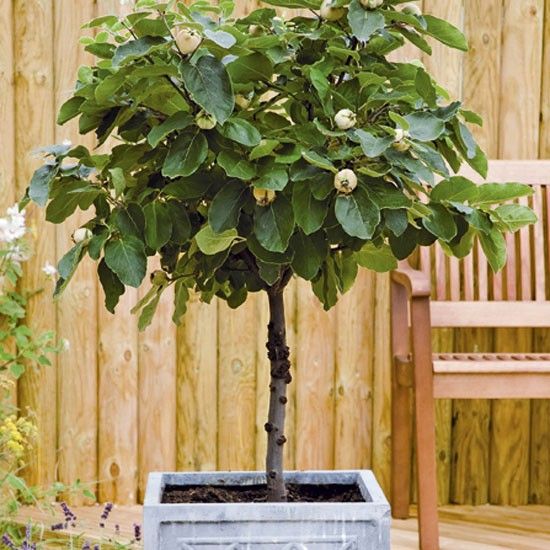
Use a soil based [loam] compost such as John Innes no 2; this is preferred over peat based or coi composts because it has mote body and does not lose water so readily.Fertilizer can be given by way of a foliar feed or Osmocote tabs[ traditional granular fertilizers used for trees growing in the open ground are not suitable.Aim for a container size not less than 24” but at the other end of the scale, try not to over-pot. There is no point in planting a small tree in a 60 litre capacity container when so much of the compost will remain unused and go stale.
Regular watering is essential to the well-being of your container grown Pear tree as it has no access to naturally occurring rainwater. Even a traditional English shower often has little effect for trees growing in pots and it needs heavy continuous rain to do any good. So be prepared to water regularly, every day during the growing season and twice a day if it is hot. You may wish to set up an automatic system, some quite reasonably priced methods are available and will ensure your trees receive an adequate and regular water supply when it is needed.Cropping is often induced at an earlier age with pot grown trees than would be the case with trees growing in the open ground.



